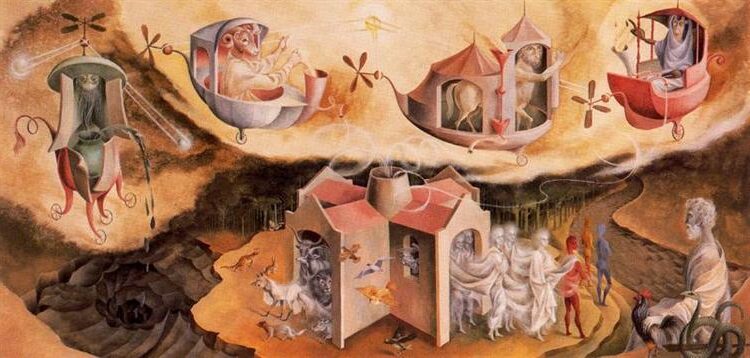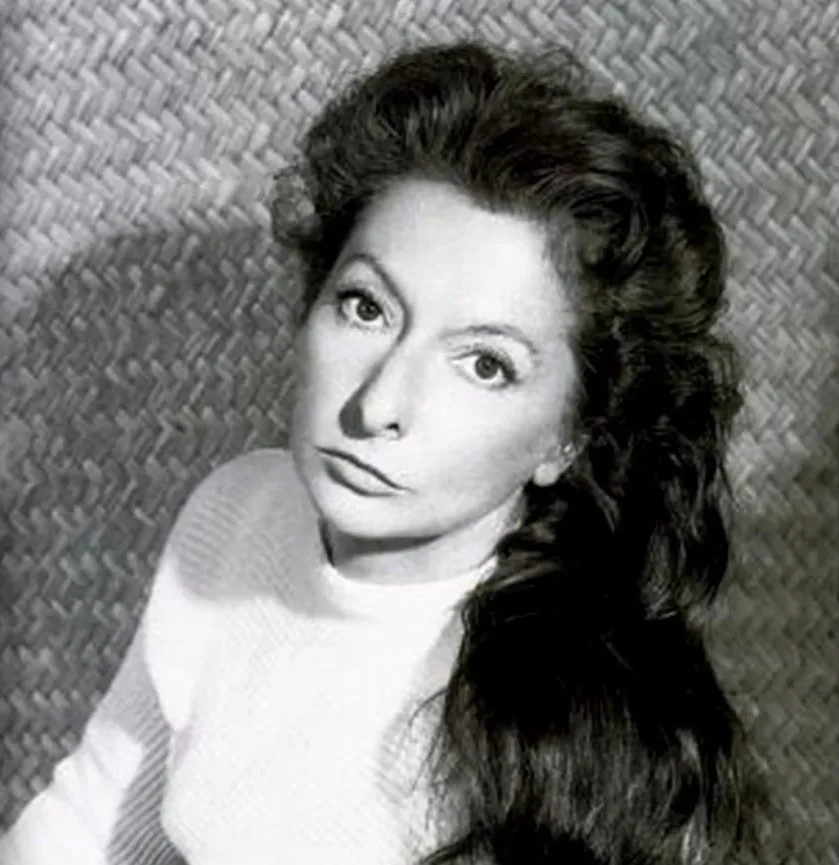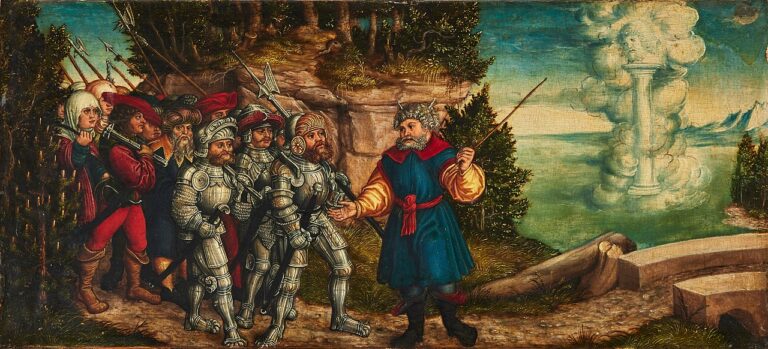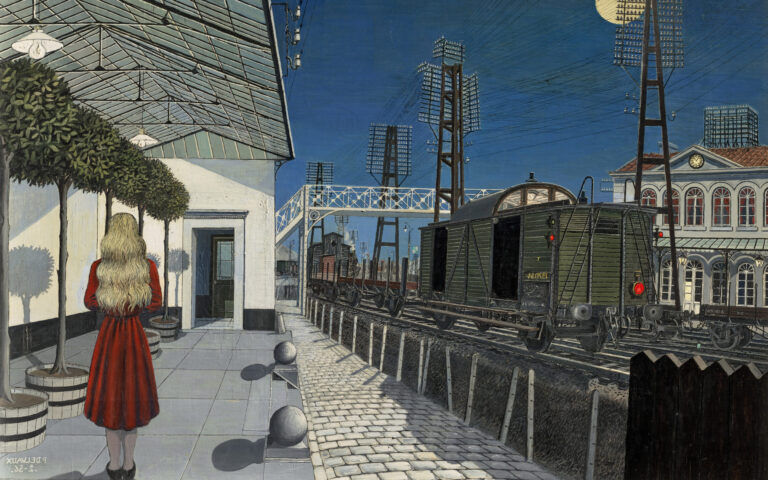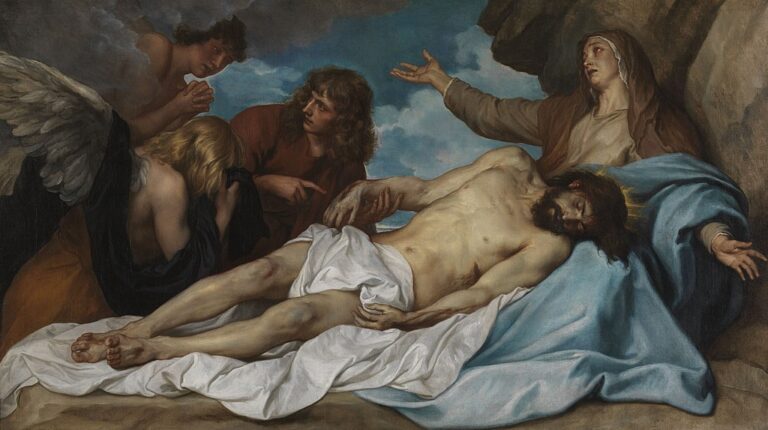Remedios Varo Paintings: Exploring Surrealist Masterpieces
Born: 16 December 1908, Anglès, Girona, Spain
Death: 8 October 1963, Mexico City, Mexico
Art Movement: Surrealism
Nationality: Spanish
Influenced By: Leonora Carrington and Hieronymus Bosch
Institution: Real Academia de Bellas Artes de San Fernando, Madrid
Remedios Varo Paintings: Exploring Surrealist Masterpieces
Life and Influence of Remedios Varo
Remedios Varo, a Spanish Surrealist painter, is celebrated for her unique artistic vision and contributions to Surrealism. Her work reflects personal, historical, and cultural influences, forming a bridge between European and Mexican art.
Early Years and Spanish Civil War
Remedios Varo was born in 1908 in Anglès, Spain. Her father, a hydraulic engineer, instilled in her a love for drawing and technical skills. While studying at the Madrid School of Fine Arts, she was influenced by the avant-garde art of the time. Varo’s early artistic pursuits were interrupted by the Spanish Civil War, leading to her eventual departure from Spain.

Internado Ambulante (Ambulatory Internship) by Remedios Varo
The war’s political turmoil profoundly impacted her and shaped her future work. This period laid the groundwork for her later Surrealist ventures, as she mingled with other artists and absorbed the chaotic atmosphere, which would later seep into her mystical and imaginative paintings.
Parisian Interlude and Surrealist Connections
In Paris, Varo immersed herself in the thriving art scene. She became a part of the Surrealist movement, connecting with various artists, including her partner Benjamin Péret. These connections broadened her artistic horizons and deepened her involvement in Surrealism.
By engaging with key figures such as André Breton, she adopted and adapted Surrealist themes into her unique style. This period was marked by intense exploration, though political tensions in Europe soon disrupted her progress. Varo’s time in Paris was formative, with her experimentation leading to a distinct fusion of her Spanish roots, Surrealist elements, and emerging personal symbolism.
Exile to Mexico and Artistic Flourishing
Forced into exile by World War II, Varo settled in Mexico City, where her creativity truly blossomed. Influenced by Mexican culture and fellow expatriate artists such as Leonora Carrington, she developed an individualistic style characterized by mystical landscapes and fantastical creatures.

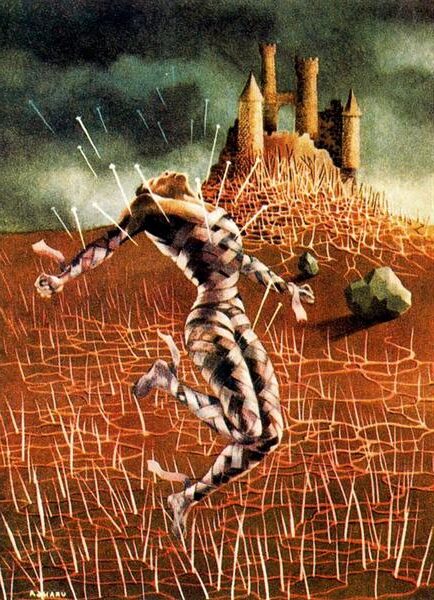
Unlike her more tumultuous years in Europe, Mexico provided a stable environment, allowing her artistic voice to mature. She held several exhibitions, gaining recognition for her distinctive work. Her art during this period is noted for its seamless blend of mysticism and meticulous detail, cementing her reputation as a leading figure in Mexican Surrealist art.
Stylistic Elements and Techniques
Remedios Varo was known for blending mysticism with scientific elements, creating a unique style of surrealist art. Her paintings often included dreamlike imagery and symbolic elements. Varo demonstrated an impressive level of technical proficiency through her precise brushwork and innovative techniques.
Fusion of Mysticism and Science
Varo’s art intricately merged magical and scientific themes. She used mysticism and alchemy as central elements in her work. This fusion can be seen in her representations of imaginary worlds where scientific principles are depicted as mystical. Her interest in science extended to depicting structures and forms inspired by natural phenomena.
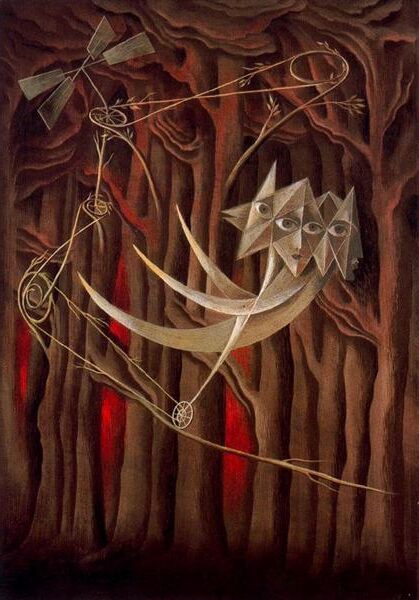
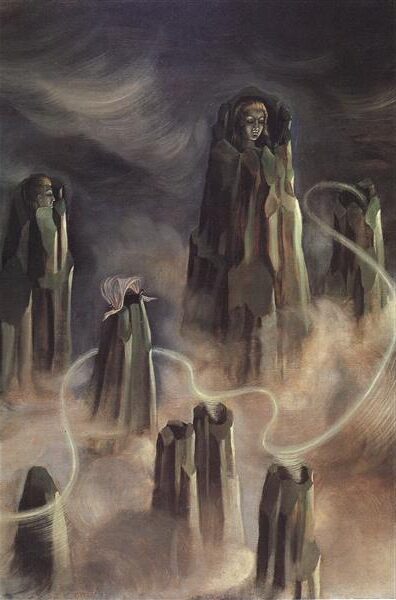
Her paintings also show the influence of Hieronymus Bosch and the concept of plant architecture. She created detailed paintings that showed how organic and technological elements could coexist. Varo skillfully integrated mystical and scientific symbols to explore themes of transformation and creation.
Surrealist Imagery and Symbolism
Using surrealism’s imaginative nature, Varo created imaginative works full of symbolism. She was inspired by artists like Salvador Dalí and Roberto Matta, using dreamlike imagery to present layered meanings. Her works often included mystical figures engaged in otherworldly activities.
Her paintings incorporated symbols that represented themes of inner journeys and psychological explorations. Varo’s use of architectural forms and surreal landscapes added to the dreamlike quality. These symbols often pointed to a deeper narrative, engaging viewers to uncover hidden meanings in her work.
Varo’s Technical Proficiency
Varo was a master of technique. She displayed her skill through detailed brushwork and innovative methods. She utilized a technique similar to fumage, where she used smoke to create unique textures.


Her technical prowess extended to her sophisticated use of color and light, creating depth and ambiance in her art. Her attention to detail and ability to evoke emotion made her paintings stand out in the surrealist movement. Through the delicate use of fine lines and controlled brushwork, she achieved an unmatched level of detail.
Iconic Works and Themes
Remedios Varo’s paintings are known for their mystical and surreal themes. Her works often delve into the depths of spiritual and philosophical questions, using both recurring motifs and rich symbolism.
Renowned Masterpieces
Some of the most famous paintings by Remedios Varo include “Embroidering the Earth’s Mantle,” “The Escape,” and “The Flautist.” In “Embroidering the Earth’s Mantle,” a group of women work in a tower, weaving the earth’s crust. This painting evokes ideas of creation and transformation.
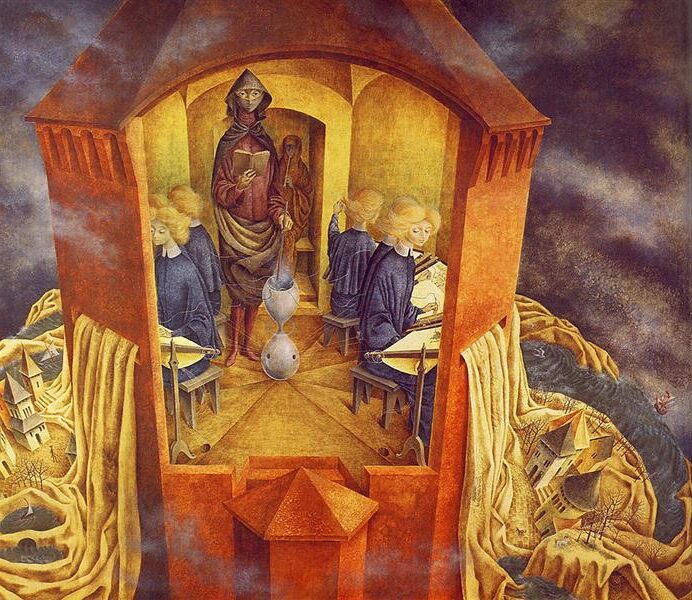
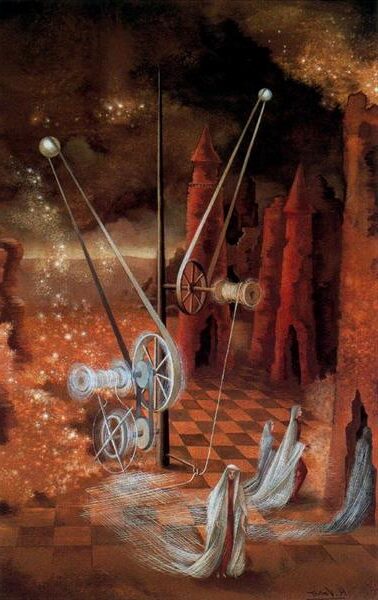
“The Escape” depicts a mysterious scene filled with movement and introspection. “The Flautist” shows a dream-like vision, melding music with a surreal environment. These pieces are celebrated for their complex narratives and intricate details. They are on display in prestigious galleries like the National Museum of Women in the Arts.
Recurring Motifs and Metaphors
Varo often used elements such as the crescent moon, butterflies, and intricate machinery to symbolize concepts of feminine consciousness and transformation. The “Crescent Moon” signifies mystery and the unknown, frequently appearing next to figures on a spiritual journey.
Motifs such as the butterfly are a metaphor for transformation, reflecting themes of change and evolution. Her paintings often feature characters engaged in magical acts, symbolizing the intersection of the mystical and the mundane. Works like “Star Catcher” showcase this interplay between the ordinary and the extraordinary.
Influence on Modern Art
Remedios Varo’s impact on modern art is widely recognized. Her unique style and themes have inspired countless artists and art enthusiasts. Pieces like “Allegory of Winter” and “Solar Music” have found relevance in discussions about modernity and identity.
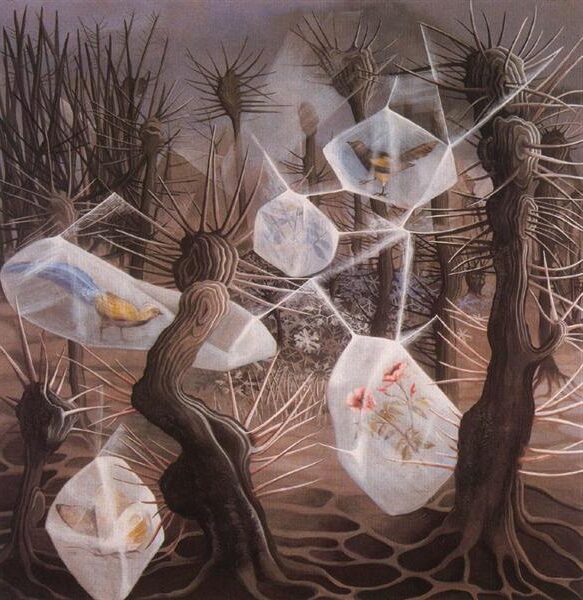

Institutions such as the Museum of Modern Art have acknowledged her contribution to art history, highlighting her ability to blend surreal imagery with philosophical depth. By incorporating strong metaphors and a distinct surrealist style, Varo has carved a unique niche in the art world, influencing both contemporary artists and scholars.
Legacy and Recognition
Remedios Varo left a profound mark on the art world, notably impacting female surrealists and inspiring numerous exhibitions after her death. Her work serves as a bridge between Spanish and Mexican art, reflecting both her cultural heritage and the surrealist movement.
Varo’s Impact on Female Surrealists
Remedios Varo is a pivotal figure for female surrealists, offering inspiration with her innovative depictions of dreamlike scenes. Her ability to weave intricate stories through art gave a voice to women in a male-dominated movement.
Her influence is notable in the works of others who followed in her footsteps, such as Leonora Carrington. Varo tackled themes that resonated with women, like identity and the mystical, paving the way for more women to explore surrealism and contribute to its development. Her art remains a crucial reference point for exploring women’s roles and perspectives in art.
Posthumous Exhibitions
After her death, Varo’s legacy continued to grow through various exhibitions that celebrated her unique vision. Major retrospectives in Mexico, where she became a legendary figure in surrealism, attracted audiences worldwide.

La huida (1961) by Remedios Varo
The Museum of Modern Art in Mexico hosted a significant retrospective in 1971, highlighting her status as a leading surrealist painter. Her works gained further attention through exhibitions at notable institutions like the National Museum of Women in the Arts.
These exhibitions ensured that her contributions to surrealism, especially as a Spanish artist in Mexico, were recognized and appreciated on a global scale. Through these posthumous showcases, Varo solidified her place among the greats in both Mexican and Spanish art history.
Frequently Asked Questions
Remedios Varo is admired for her distinctive art style and her impact on surrealism. Her works are rich with symbolic details and imaginative themes.
What are the defining characteristics of Remedios Varo’s art style?
Remedios Varo’s art is known for its mysterious and detailed nature. She often depicted androgynous figures and otherworldly scenes. Her style includes elements from medieval art and the influence of Old Masters.
Where are Remedios Varo’s paintings displayed?
Varo’s paintings can be found in various museums and galleries across the world. Important collections include those in Mexico, where she spent much of her life and career.
Why is Remedios Varo considered significant in the art world?
She is considered significant because of her unique contribution to surrealism, blending personal mythology, science, and magical elements. Her works continue to inspire new generations of artists and art enthusiasts.
What themes are commonly explored in Remedios Varo’s paintings?
Her paintings often explore themes of dreams, magic, and transformation. She frequently delves into the inner workings of the mind, nature, and mystical experiences.
Who were Remedios Varo’s contemporaries in the surrealist movement?
Varo was associated with many notable surrealists, such as Leonora Carrington and André Breton. These artists shared a fascination with the subconscious and dream-like imagery.
Can you provide insights into the symbolism found in Remedios Varo’s artworks?
Her artworks often include symbols like celestial bodies, hybrid creatures, and intricate machines. These symbols reflect her interest in astrology, alchemy, and the intersection of science and art.

